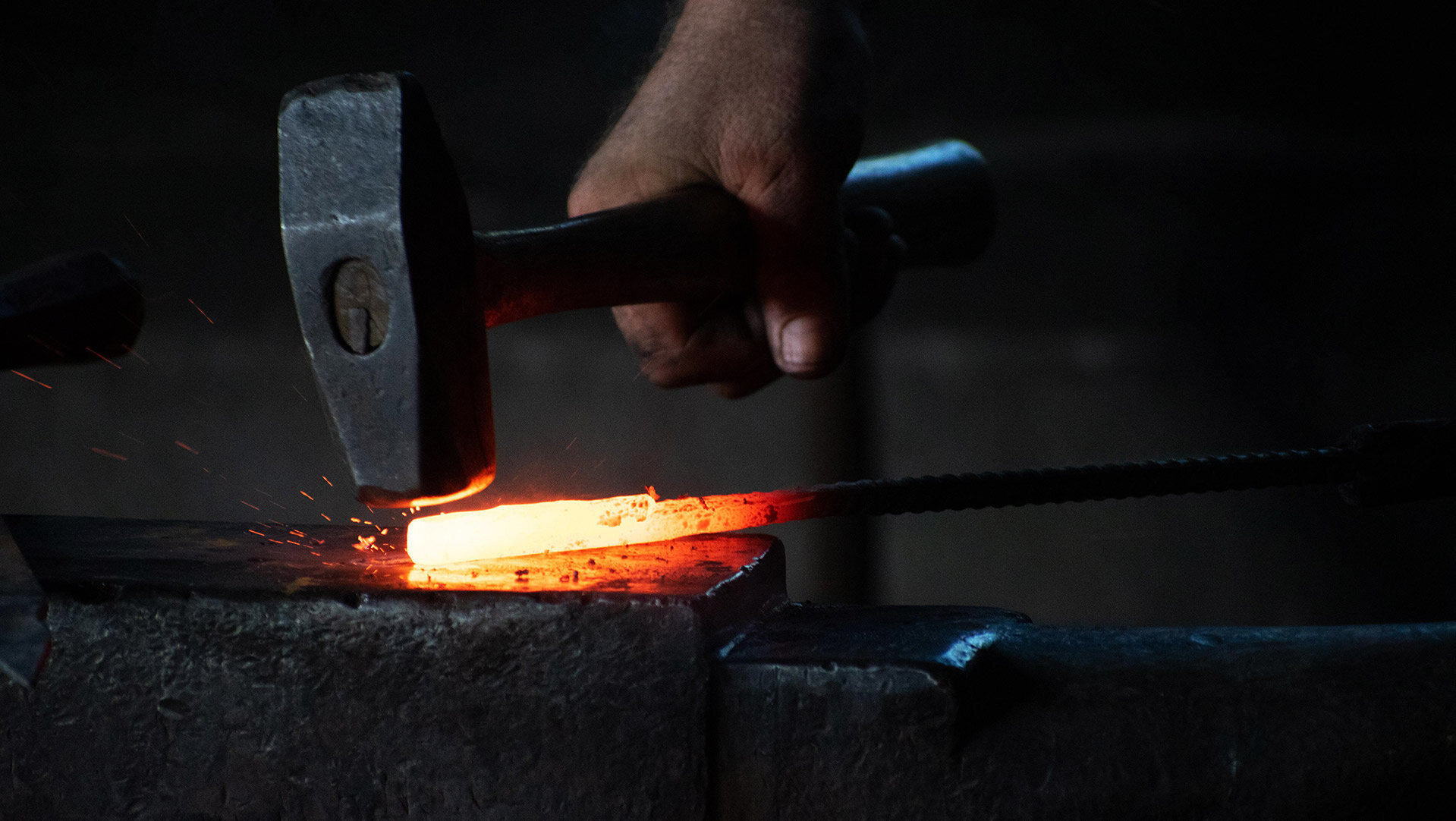My Story
Where my journey into blacksmithing began.
My journey in blacksmithing started in the month of September 1988 at the age of 13, I joined a group of pre 1840’s reenactors inside my church.
I loved every minute of it, and felt at home. My grandpa gave me his old canvas “hunting pants” which fit me like knee britches. They were about 60 years old at that point. My grandmother made my first shirt, both of which I still have. At a local rendezvous I found a coonskin cap, and made a pair of moccasins my mother purchased for me from Tandy Leather. To cover the bare legs I made something that resembled gators that buttoned up the side. All of this was without research, and just shooting in the dark.
It wasn’t until 2009 that I realized I was missing something, and started asking questions. That was when I met Curt Schmidt, a common contributor on several history forum’s. His knowledge and willingness to help propelled my reenacting into attending juried colonial events, meeting great people, making some of my own accoutrements and eventually demonstrating at some events.
Photography by David Wright
Photography by Andy Andrew Kanez Jr.
How I started learning about blacksmithing.
From there the first time I started learning about blacksmithing was in Fort DeChartres, a historical fort in Southern Illinois some 30 miles from the town I was born in. I traveled there with a friend to look around, get ideas, and to learn what I could from the reenactors there.
It was there the first time I recall seeing historical blacksmiths at work with a huge bellows. There was as usual in a setting like this, a large crowd around watching them work. While my interest wasn’t so much that I couldn’t live without the thought of blacksmithing, I did admire the craft and skill it took to manipulate iron into whatever you wanted to make.
The spark.
In my senior year of high school, our auto shop teacher popped in a video of a few men making a gun from scratch. This of course was Wallace Gusler, the gunsmith of colonial Williamsburg video. I was more interested in my 1971 Chevelle at that time, I did take note of another craft I felt like I wanted to try some day, if given the chance.
The first thing I blacksmithed was a knife. Forged with the fire of my welding torch, and beat with a hammer on the anvil behind my bench vise. I knew nothing about heat treating or annealing, but I had pounded out a knife blank from an old file.
I love working at the forge. It is satisfying to me to see something made from something that looked nothing like what it turned out to be, all with fire, a hammer, and a file.
Made by my own two hands.
Once a piece is complete, the sense of achievement when finished is highly gratifying to me. Made by my own hands, whatever it is can be made and used. A large part of the satisfaction comes from the historical process. I sometimes imagine my grandfathers working as carpenters or general farm work, and doing things out of necessity in a similar fashion.
If I went to the forge and could make anything I wanted, it would be a tomahawk. I have always admired the hatchet and ability to chop and make things with it at a camp. While researching the 18th century tomahawk I realized they were primarily carried for use as a weapon first, and a tool second. Research is also a satisfying part of the process. It is time spent no one sees until you produce your work.
My advice to anyone who wants to learn how to be a blacksmith…
First, search to see if there is a nearby blacksmith guild or group. Many of these groups allow for beginners to come in and make something for a day. If your interest hasn’t been drowned in coal smoke and sore muscles, search out an individual who already has all the equipment and see if they are willing to share. Next, watch local sales or auctions for equipment to start your own shop.
Physical fitness is recommended for this kind of work. Keeping your body in shape will allow you to work for a long time, and may prevent injury.
Finally, search out quality videos (not always available on YouTube) such as those produced by American Pioneer Video for detailed instructions by masters in the craft. It can further your learning process at a faster pace.





